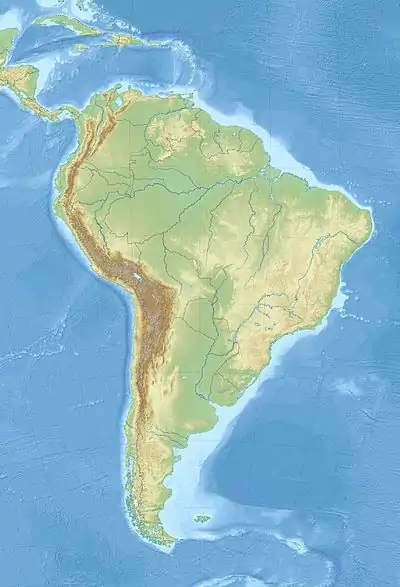Lujanian
The Lujanian age is a period of geologic time (0.8–0.011 Ma or 800–11 tya) within the Pleistocene and Holocene epochs of the Neogene used more specifically with South American land mammal ages. It follows the Ensenadan.[1] The age is usually divided into the middle Pleistocene Bonaerian stage, which ends at about 130,000 years, and the Lujanian, which lasts from about 130,000 years into the early Holocene.[2]
References
- Paleo Database: Lujanian
- Cione, A. L.; Tonni, E. P.; Soibelzon, L. (2003). "The Broken Zig-Zag: Late Cenozoic large mammal and tortoise extinction in South America" (PDF). Rev. Mus. Argentino Cienc. Nat., n.s. 5 (1): 1–19. ISSN 1514-5158. Archived from the original (PDF) on 2011-07-06. Retrieved 2011-02-06.
This article is issued from Wikipedia. The text is licensed under Creative Commons - Attribution - Sharealike. Additional terms may apply for the media files.
